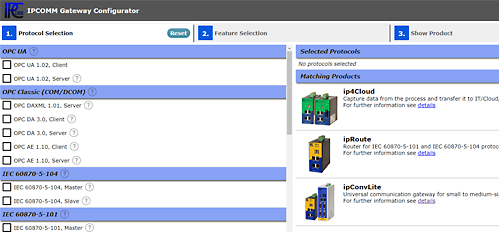-
IPCOMM developed a gateway to couple two communication servers with different remote control stations. Process data from an SQL database are transmitted there.
Two equal ipConv gateways - one per control room A/B - poll the mySQL database of the redundant communication servers A and B and provide the remote control stations per TASE.2, Server respectively IEC 60870-5-104, Slave with the read out process data. If the connection with one of the SQL servers fails an alarm is given and the gateway tries to establish a connection to the other SQL server. If it also fails an alarm is given as well. The attempt to establish a connection is repeated cyclically until it works and the connection is validated.
The collected metering data are transmitted to the ELCOM-90 remote control station via ELCOM-90 Responder, Server for simulation purposes. A connection between TASE.2 / IEC 104 and ELCOM-90 is only possible if an SQL connection is established or at least one database provides valid data.The ipConv gateways of one control room are redundant to the respective gateway of the other control room (RC).
A remote control center reads out the information from an arbitrary ipConv gateway via TASE.2/Client or IEC 61850-5-104/Client, which also supplies the connected local control centers with configured data and alerts per Modbus, Slave. For example, once a connection between ipConv gateway and remote control center fails the gateway sends an alert to both local control centers.
Ethernet bonding (Teaming) is realised to ensure the failure safety of the LAN connection, i.e. the physical Ethernet interfaces eth0 and eth1 are bundled to one logical connection.
Our powerful and reliable MEC is used as gateway hardware platform.
Product Wizard 
- To the Gateway in a snap
- Get in touch!
- Customer support
+49 911 18 07 91 - 0
support@ipcomm.de
Product consulting
+49 911 18 07 91 - 0
info@ipcomm.de

